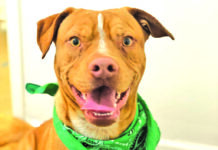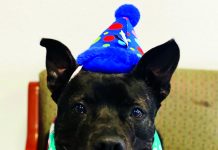On April 6, the Bronx Zoo reported that a tiger in their care is infected with COVID-19 in an apparent human-to-animal transmission. While reports from Hong Kong indicate that dogs and cats may become infected with the virus, there is currently no evidence that they play a role in the spread of the virus to humans. However, Society for the Prevention of Cruelty to Animals Los Angeles (spcaLA) urges animal companions and those in the animal welfare community to take precautions to protect themselves and pets during this time.
“It’s important to note that while testing revealed the Bronx Zoo tiger Nadia is infected with the virus, that does not mean she is infectious,” said Dr. Brittin Ross, DVM, spcaLA Veterinarian. “Best practices at this time continue to focus on hygiene and social distancing.”
All pet parents should have a plan in place, just as they would in any emergency. A pet to-go kit should be stocked and ready with items like food, leash/collars, medicine, and a copy of medical records. A designated caregiver should be in place in the event you are unable to care for your pets. If a pet parent becomes ill, they should quarantine from family members, including the family pet.
spcaLA offers the following guidance for pet owners and animal care facilities. Animal care facilities can email info@spcaLA.com to obtain a sample copy of spcaLA’s protocol.
Guidance for Pet Owners
Pets are members of the family, and just like human family members, spcaLA urges pet owners to protect pets. If dog parks are still open in your area, spcaLA urges pet parents to avoid them.
— Maintain good hygiene practices by washing hands thoroughly with soap and water after touching pets, in keeping with CDC guidelines.
— Do not allow your dogs to play with other dogs or meet people during daily walks. Keep a six-foot distance between your dog and others, just as you would with other people.
— Curb your dog’s interest in sniffing excrement of other animals, or picking up refuse on the ground.
— Before you come inside from a walk, wipe your dog’s paws with a sudsy solution of pet shampoo and water. When finished, discard the wipe and thoroughly rinse your pet’s paws with water to remove soap residue. If you have them available, you may consider having your dog wear shoes, socks, or booties outdoors.
— Keep your cats and other pets safely indoors. If you are unable to confine your cat, follow the wipe down procedures indicated above.
— Do not use Lysol wipes, bleach, or other harsh chemicals on your pets. Ask your veterinarian for additional safe options to clean your pet’s paws.
Guidance for Animal Care Facilities
— Protect your staff and volunteers. Determine and implement your shelter’s intake procedures, which should apply to returning fosters and other clients, as well as stray and surrendered pets.
— Protect the community. Determine and implement your shelter’s procedures prior to placing animals in adoption, foster, or returning them to their owners.
— Pet boarding and daycare facilities, many of whom are open and caring for the pets of medical, grocery, sanitation, food delivery, and other essential workers, should take care to develop and implement intake and return procedures.
— Protocols for incoming and outgoing animals may include bathing (paying special attention to the areas most frequently petted by people), a period of isolation, and other actions. Further consideration should be made as to PPE for staff and procedures to accept or return animals to the public while maintaining safe social distance.
spcaLA continues to monitor the situation, and will update protocols with any new information from the Center for Disease Control (CDC). Furthermore, the public is encouraged to stay informed by following these organizations’ websites: World Health Organization, American Veterinary Medical Association, and World Organization for Animal Health.
For more information or to schedule an interview, please contact Ana Bustilloz at 323-707-1271 cell or by email at abustilloz@spcaLA.com.












